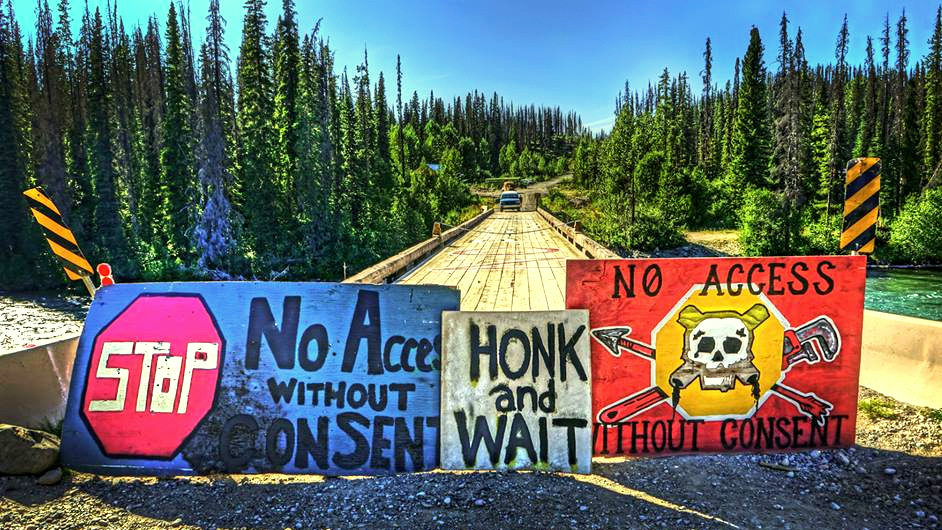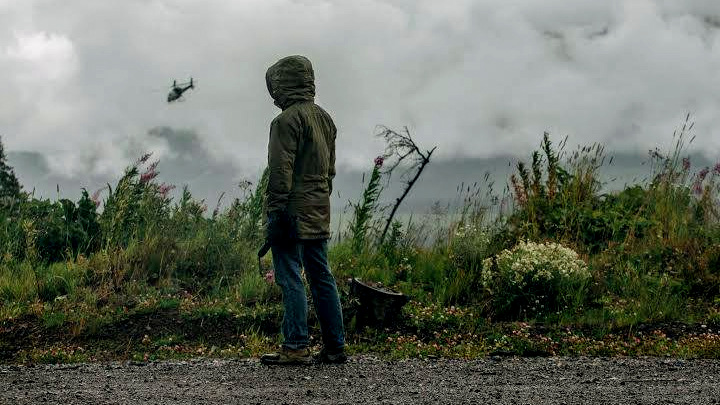Originally published at MintPress News.
BURNS LAKE, British Columbia — In central British Columbia, a band of First Nations people has maintained a remarkable resistance against big oil for the last six years.
The Wet’suwet’en, a band of about 140 indigenous members, maintain the Unist’ot’en Camp, a checkpoint blocking the only bridge entering their land. It’s a direct challenge to the Canadian status quo because the Wet’suwet’en say they won’t let pipeline crews, oil company developers, or even Canadian police onto their land. A website for the Idle No More movement, which seeks equality and civil liberties for Indigenous people, describes the purpose of the camp:
The camp is located at the shore of the Wedzin Kwah and mouth of the Gosnell Creek. These are all tributary to the the Skeena, Bulkley, and Babine Rivers. The proposed pipelines from Enbridge Northern Gateway and Pacific Trails both seek to cross the rivers at the exact point where the resistance camp is built on the Unis’tot’en Territory of Talbits Kwah.
The Unist’ot’en (C’ihlts’ehkhyu / Big Frog Clan) along with other strong uncompromising allies will stop this destructive path, for the future generations, for the biodiversity, and for solidarity with our neighbours living amidst the heavy impacts in the Tar Sands Affected areas in Northern Alberta, and regions heavily affected by Fracking Natural Gas and Shale Oil, as well as communities impacted by Refineries, Pipelines, and Fuel Terminals and Port Expansions.

The Wet’suwet’en have good reason to believe a pipeline could damage their land and its resources. According to a study from the Polaris Institute, Enbridge, which hopes to build its massive Northern Gateway pipeline across the territory, had 804 spills between 1999 and 2010, resulting in 161,475 gallons of spilled oil. Additionally, a review by Canada’s National Energy Board found that the project could cause “adverse effects” on “the atmospheric environment, rare plants and rare ecological communities, old-growth forests, soils, wetlands, woodland caribou, grizzly bear, terrestrial birds, amphibians, freshwater fish and fish habitat, surface and groundwater resources, marine mammals, marine fish and fish habitat, marine water and sediment quality, marine vegetation, and marine birds.”
According to a profile last year by Vice News, those seeking access to the Unist’ot’en camp must answer several questions:
“Who are you? Where are you from? How long do you plan to stay if we let you in? Do you work for the industry or government that’s destroying our lands? How will your visit benefit my people?” Under these criteria, Enbridge, and other pipeline companies, are banned outright.

(Facebook / Unist’ot’en Camp)
While Canada claims ownership of the land, Ottawa has been unable to produce the paperwork to prove it, leaving the Wet’suwet’en confident in their claim to the territory. Vice reports:
“No province or no federal government has say on what happens to these lands, and yet they still issue permits, and think that their permits are valid. Our law supersedes any law outside of our territory,” [Unist’ot’en camp leader Freda] Huson said. “They can try and do whatever they want and bring any kind of paper here. It’s good as firestarter to me.”
Last month, in the most recent attempt at an incursion, the Unist’ot’en Camp turned away Chevron developers attempting to survey the property for another proposed fracking pipeline. According to the subMedia collective, which filmed the encounter, “the situation is rapidly developing” but the encampment continues to hold strong.
Watch “Chevron attempts to enter Unist’ot’en Camp” on the Unist’ot’en Camp playlist from the subMedia collective: